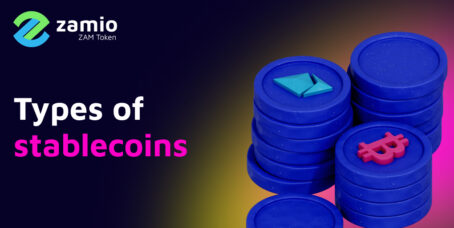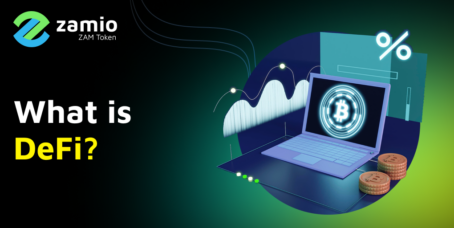What is Stablecoin
Stablecoins are cryptocurrency pegged to real world value – all the pros of blockchain without the cons of volatility.
Sharp changes on the crypto market scare off many companies, while stablecoins intend to strengthen the cooperation of traditional finance and digital.
Stables serve the purpose of popularizing cryptocurrencies quite successfully among ordinary people and companies in the traditional sector. Stablecoins have already acquired a large market: the total supply for stablecoin grew by 1594% from $5.9 billion at the beginning of 2020 to more than $100 Billion now.
What are the differences between stablecoins & other cryptocurrencies?
Cryptocurrency prices can change sharply. For example, the value of BTC is regulated by the supply and demand ratio. The Bitcoin price rose from $10,000 to $40,000 in six months: from November 2020 to May 2021. The value can also collapse by 30%-40% or more.
Stable cryptocurrencies do not jump in price and are of three types of them:
- FIAT-COLLATERALIZED STABLECOINS: These stablecoins are backed by a 1:1 ratio to national fiat currency. The collateral is held in real bank accounts. This category of stablecoins is the most simple but the most centralized.
- COMMODITY-COLLATERALIZED STABLECOINS: This type of stablecoins is backed by commodities, i.e. real world resources. The most popular commodities to be collateralized are gold and precious metals.
- CRYPTO-COLLATERALIZED STABLECOINS: Crypto-Backed stablecoins utilize other digital currencies with high market cap as a collateral. Thanks to this approach, stablecoins appear to be much more decentralized than their fiat-backed counterparts, since everything is conducted on the blockchain. Cryptocurrencies are extremely volatile, so stablecoin backed by a single cryptocurrency wouldn’t be very efficient. Thus, it is more effecient to use a portfolio of cryptocurrencies as a collateral. The main reason why crypto-backed stablecoins are often over-collateralized, so that it can withstand the extreme price fluctuations of the underlying assets. The most common form of crypto-backed stablecoins require users to lock their crypto into a smart contract which will then mint a fixed amount of stablecoins.
- NON-COLLATERALIZED STABLECOINS: These types of coins use an algorithmically governed approach to control the stablecoin supply instead of any asset as a collateral. This is a model known as seigniorage shares. Such coins rely on smart contracts to sell tokens if the price falls below the peg or to supply tokens to the market if the value increases. The main objective is to get the coin’s price as close as possible to USD $1.
Stablecoins use cases:
Settlement medium: Stable cryptocurrencies serve as a medium of exchange for businesses and indivuals.
Asset of value: Stables are used to exchange goods when one of the parties does not want to peg the value of products to fiat currencies. In the near future, a full transition to stable is possible due to the high inflation of fiat money.
Hedging mechanism: Stablecoins are used as a tool to protect capital during price falls. This allows to save investments from depreciation in the event of abrupt changes in the market.
Pros:
- Low level of volatility
- Providing real value: gold, oil, fiat money, etc. This feature makes it possible to confidently use the stables.
- Can be used to preserve value and fix profits on the crypto market.
- Minimal dependence on government agencies.
- Attracting new participants to the cryptocurrency market, cryptocurrency mass adoption.
Cons:
- Centralization: stables are issued by huge crypto exchanges or financial holdings.
- Black PR of stables and scandals in the media.
- The presence of rules that restrict operations with cryptocurrency in banking institutions.
- Risk of being robbed of a banking institution where the pegged money is held, for example, USDT.
Despite these downsides, stables are critical elements of the cryptocurrency market. Thanks to stablization mechanics, such cryptocurrency always have a fixed price. This allows stables to be reliably used not only as a settlement medium, but also as a tool for fixing profits on the crypto markets.







